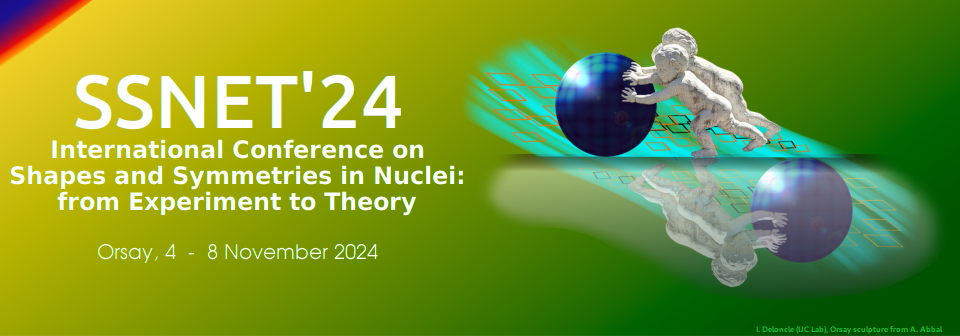Orateur
Description
The `island' of fission isomers identified in the actinide region (Z = 92 - 97, N = 141- 151) originates from multi-humped fission barriers, which can be understood as the result of superimposing microscopic shell corrections to the macroscopic liquid drop model description. For the first time, the in-flight fragmentation and electromagnetic dissociation methods were applied at GSI for populating fission isomers. With the fragment separator (FRS) at GSI, the fragmentation of 1 GeV/u $^{238}$U projectiles gives access to isotopes that are hard or impossible to reach by light particle-induced reactions that are so far in use. In-flight separation with the FRS allows studying fission isomers with half-lives as short as 100 ns. Most importantly, it provides beams with high purity and enables event-by-event identification. Two detection methods were employed to study fission isomers with half-lives in the range of approximately 100 ns to 50 ms: beam implantation in a fast plastic scintillator, and beam thermalization in a cryogenic stopping cell at the FRS Ion Catcher followed by subsequent detection [1]. Production and measurements of fission isomers $^{240f,242f}$Am with a background-free method have been developed at the IGISOL facility in Jyväskylä, Finland. Results from these experiments will be presented in this contribution.
[1] J. Zhao et al., Procedings of Science 419 (2023) PoS (FAIRness2022) 063.

